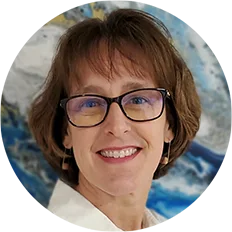Designing professional learning support for educators can be challenging during the best of times: so many opportunities exist and the topics and modes of delivery are as varied as a districts’ goals. But throw in a pandemic, constantly shifting learning environments, and high levels of stress– and providing teachers with the support that they need for their own growth can become overwhelming for any leader. It might be tempting to pick a one-size-fits-all training to check the box of professional development and squeeze in a growth opportunity, but these stand-alone sessions are rarely effective. In fact, studies show that teachers consider most professional development to be useless in meeting their own growth goals.
So how do we support educators, meet their needs, and provide meaningful opportunities to learn and grow? Adult learning theory teaches us that effective training and development result from having clear goals, meaningful connections to the learners’ experiences, and a self-directed approach that honors the learner’s expertise and voice. When you think about it, these principles look surprisingly like best practices in inclusive and responsive teaching practices our teachers are often utilizing in their own classrooms.
Let’s apply the same foundational principles to a framework for professional development design.
Relating to your learners
1. Learning must be meaningful and relevant
Get to know your teachers and staff: What’s most important to them? What needs do they identify? Is enhancing student engagement a priority or revising an outdated curriculum unit? Honor their voice and solicit input using Interest Surveys to identify PD topics that resonate with them and specific growth areas that they wish to address.
2. A trauma-informed lens is key
We know that stress and trauma interrupt the learning process as our brain enters fight, flight, or freeze mode. Nothing new can be effectively learned in traumatic conditions. When you get to know your teachers, you can actively listen for the pressures, stress, and emotions they are bringing to their work. Focus on addressing these needs before asking them to learn a new curriculum management system or design a capstone project.
Collaboratively map out learning goals and pathways
3. Co-create learning goals and expectations
Work together to identify a shared vision of what growth looks like during the year based on the needs teachers have identified and the goals of the district. Does ‘implement project-based learning’ look the same in kindergarten and 11th grade? What does successfully meeting this goal mean: trying out several new lessons or overhauling a whole unit? When teachers have a voice in the creation of professional learning goals, they help shape a manageable plan with clear expectations.
4. Provide a variety of engagement opportunities
Can the learning goals be met through conference attendance? Self-directed learning? Collaborative interdisciplinary projects? Be open to the many ways teachers engage in learning and allow for personalized plans to meet the goals. Providing structured coaching opportunities can also support faculty in meeting their goals.
5. Provide teachers with an authentic audience to share their learning
Try planning a peer-to-peer workshop day or collecting learning reflections in a “what I learned this year” yearbook. Sharing expertise with one another helps build community and collaboration.
Provide a balance of content and support
6. Chunking up the learning helps avoid overload
Our brains can only process so much new information at once. Rather than plan a content-rich two-day intensive program for opening meetings, choose smaller, more frequent opportunities to engage in professional learning. Use the initial chunk of time to build relationships, understanding, and trust. Schedule shorter formal learning programs or informal lunch and learns that are spaced out throughout the year to give faculty time to implement and reflect on a new practice to build on the skill over time.
7. Ensure time and space for support
Even with best intentions, we can easily get bogged down with life and our learning progress can get derailed. Show teachers that their development is a priority by giving them time and space to follow through with their own learning goals. Provide periodic class coverage or shift a regular faculty meeting to self-directed PD time. Making intentional time for adult learning within the school routine sends the message that it is important enough to set aside time for.
Communication and reflection are the key
8. Provide opportunities for reflection and self-assessments
Since teachers appreciate being able to self-direct their learning, provide opportunities for self-assessment and check-ins. Ask faculty how it’s going, what goals they’ve met, and what challenges they’ve experienced. Collaborative feedback and reflections about the learning process help identify what’s working and what needs adjusting. Allowing faculty the opportunity to adjust protocols or revisit timelines demonstrates a responsiveness to unforeseen needs and keeps the line of communication open.
9. Celebrate successes
Teachers can set far-reaching goals that can seem difficult to achieve. Encourage small steps that can be sustained and celebrate wins as you go. We’ve all returned from summer break with a million new ideas to try, only to feel frustrated that we didn’t get a chance to implement them all. Focus on one or two new strategies or goals at a time. As these small goals are accomplished, build on these successes and share out these learning wins.
10. Communicate frequently
Whether it’s feedback on efforts, adjusting goals, or overcoming challenges, keep communication at the forefront. Even as the district or team builds shared goals, our individual experiences in work and life vary dramatically. Be cognizant of the ongoing experiences of your faculty and staff, and engage them in conversation frequently. If you’re relating to your learner, as noted in steps 1 and 2 above, you’ll develop strong relationships that can weather the ups and downs of the school year. As always, developing trust and having transparent conversations about needs and goals can help create a culture of motivated learning.
When we take a page from best student instructional techniques, we see that many of these same principles apply to adult professional learning. Creating meaningful and self-directed active learning opportunities engage faculty and staff more than the obligatory ‘one and done’ PD day. When the team is empowered to direct their learning, set their goals, and reflect on their progress, engagement improves.
In the end, all professional learning has a similar goal: improve the student learning experience by providing excellent instruction and support. When educators can identify for themselves how to grow and collaborate on the structures in place for professional learning, everyone wins.








